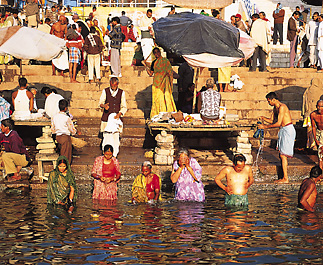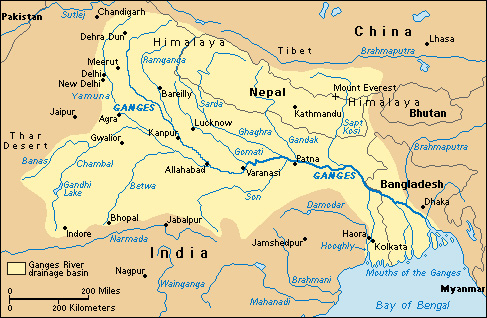Ganges << GAN jeez >> River is the greatest waterway in India and one of the longest in the world. It is most important to the Indians for the part it plays in the Hindu religion. Hindus consider it the most sacred river in India. Each year, thousands of Hindu pilgrims visit such holy cities as Varanasi and Allahabad along the banks of the Ganges to bathe in the river and to take home some of its water. Temples line the riverbank, and ghats (stairways) lead down to the water. Some pilgrims come to bathe in the water only to cleanse and purify themselves. Sick and disabled people come hoping that the touch of the water will cure their ailments. Others come to die in the river because the Hindus believe that those who die in the Ganges will be carried to Paradise.

The river is an important trade area. Its valley is fertile and densely populated. Some of India’s largest cities, such as Kolkata and Kanpur, stand on its banks. But the Ganges is less important commercially than it once was. Irrigation has drained much of its water and steamers can navigate only in the lower part of the river.

The Ganges has its beginning in an ice cave 10,300 feet (3,139 meters) above sea level in the part of the Himalaya slopes in northern India. The river flows toward the southeast and through Bangladesh, where it is known as the Padma. It runs 1,560 miles (2,510 kilometers) and empties into the Bay of Bengal. Several tributary rivers add to the waters of the Ganges River. In Bangladesh, the Brahmaputra River (known there as the Jamuna) joins the Ganges, forming a large delta.
